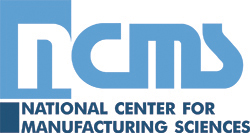Historical Articles
March, 1953 issue of Plating
The following paper is one of several that was presented at the 19,2 A E. S. Melbourne Branch Conference. It is reprinted here through the courtesy of the Defense Research Laboratories, Maribyrnong, Victoria, Australia, which published all the papers presented at that Conference in their volume “Plating Notes”.
Practical Experiences With Bright Zinc Plating
A. CHESTERFIELD, Member, A. E. S., Melbourne Branch and Foreman Electroplater, Premier Wire Works.
INTRODUCTION
This paper is intended for the practical man engaged ;n plating bright zinc. Information is given on equipment, costs and the composition and control of plating -and bright dipping solutions.
THE REASON FOR USING BRIGHT ZINC PLATING
In one shop, cadmium and’ nickel were plated at one time, but because of the sharp increase in the cost of cadmium metal and the scarcity of nickel, management was forced to seek an alternative finish.
Products of this factory included’ a wide variety of kitchenware and wire trays for ice-chests and refrigerators. A bright corrosion-resistant finish that is not toxic, and that can be used in contact with foodstuffs was required. Bright zinc was selected because of good appearance and low cost. Zinc anodes cost only 21 to 22 cents per pound compared with $2.15 per pound for cadmium anodes.
Plating efficiency of zinc is about 30 per cent less than that of cadmium, but the higher current density that can be used with zinc permits the maintenance of the same production rate. Additional current capacity is required, and slightly more power is used, but the total cost of plating zinc is much less than that of cadmium. The bright zinc bath is easy to operate.
EQUIPMENT
The equipment needed for bright zinc plating is the same as for cadmium plating, and it is as follows: steel tanks for alkaline cleaning solutions and zinc plating bath, lead-lined tank for acid pickling solution, earthenware crocks or small lead-lined tanks for bright dipping solutions. Current may be supplied from either a rectifier or generator.
CLEANING
The ordinary methods for cleaning the work before plating are used. The work is first cleaned electrolytically in an alkaline solution, then pickled in a hot 5 per cent solution of sulfuric acid followed by further electrolytic cleaning in a cold alkaline solution. The work is thoroughly rinsed, of course, after each stage.
BRIGHT ZINC PLATING SOLUTION
The writer has tried several different solutions, and: the following composition is the best of these and the easiest to control.
Zinc Cyanide ............10 ozs
Sodium Cyanide ........ 6 ozs
Sodium Hydroxide ....12 ozs
Sodium Sulfide ....... 0.1 oz
Sodium Thiosulfate...0.1 oz
Water ......................... 1 gal
The solution should be prepared in a clean tank, preferably one that has not been used with another solution. The tank should first be filled to about two-thirds of its capacity with water at a temperature of: about 120° F. The sodium hydroxide, sodium cyanide and zinc cyanide are then added and dissolved in that order.
The bath is then purified by adding the sodium sulfide, and then the sodium thiosulfate. The bath is then allowed to stand for several hours before adding the brighteners. The author has tried many different brighteners including nickel, glue, molybdic acid, and thiourea, but coumarin (0.5 oz/gal) has given best results, and it is easy to control.
CONTROL OF THE SOLUTION
Low concentration of sodium hydroxide in the solution makes the plating of bright deposits difficult, and the need for additions of caustic soda is shown by a rise in voltage and a fall in amperage shortly after the work is placed in the bath.
Low concentration of cyanide in the bath is shown by a white incrustation on the anodes. Low zinc concentration is rare, and it is shown by a very light zinc deposit on the work. Zinc plated out of the bath is normally replaced by solution from the anode, but if the bath becomes depleted in zinc it can be brought back to the required strength by allowing the anodes to remain in the bath while it is not in use.
Zinc concentration in the bath sometimes becomes too high with ordinary use, and burning may occur on those parts of the work where current density is high. High zinc concentration can be reduced by using one or two steel anodes in place of zinc anodes.
ANODES
Electrolytic zinc ingots, as used for hot-dip galvanizing, are used for anodes, and they are entirely satisfactory. Anode area is important, and it should not exceed 75 per cent of the cathode area.
The anodes should be taken out of the bath when it is not in use as they dissolve fairly rapidly owing to the potential difference between the zinc and the steel tank, and this will result in an excessive amount of zinc in the bath.
BRIGHT DIPPING
For bright dipping, best results have been obtained by dipping, first, in a chromic acid solution, and then in either a peroxide-sulfuric acid or a peroxide-nitric acid solution. The chromic acid solution contains 8 oz/gal chromic acid and a little sulfuric acid. The bleaching solution, which also improves the brightness of the zinc, contains 4 oz/gal hydrogen peroxide, and 2.5 oz/gal of either sulfuric or nitric acid. (The protective value of chromate films when treated this way appears to be doubtful. ED.) Immersion for about 10 seconds in each solution is usually sufficient. Dipping is followed by two rinses and drying in sawdust, the second rinse is in hot water.
When a bright finish is not obtained after dipping, the bright dipping solution should be checked and, if necessary, it should be strengthened or renewed. If the bright dipping solution is satisfactory brightener should be added to the plating solution and, if this has no effect, then hydroxide and, last of all, cyanide concentration should be checked. No chemicals are added to the plating solution in order to overcome troubles without first checking the points mentioned.
 |
 |
 |
 |
 |
| Home | Subscribe | Regulations | Compliance Assistance | News | Resources | Resource Locators | Directories | Online Training | About | Search | NASF.org |
The information contained in this site is provided for your review and convenience. It
is not intended to provide legal advice with respect to any federal, state, or local regulation.
You should consult with legal counsel and appropriate authorities before interpreting any
regulations or undertaking any specific course of action.
Please note that many of the regulatory discussions on STERC refer to federal
regulations. In many cases, states or local governments have promulgated relevant rules and
standards
that are different and/or more stringent than the federal regulations. Therefore, to assure full
compliance, you should investigate and comply with all applicable federal, state and local
regulations.

